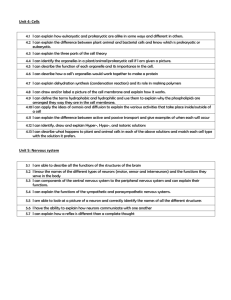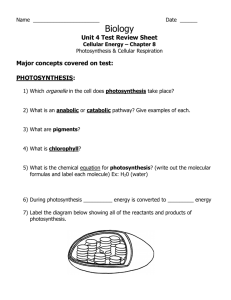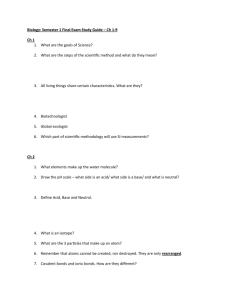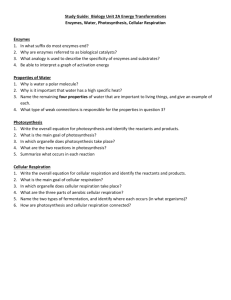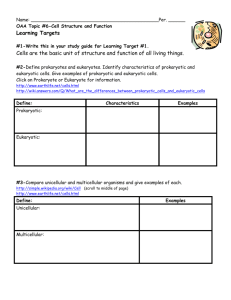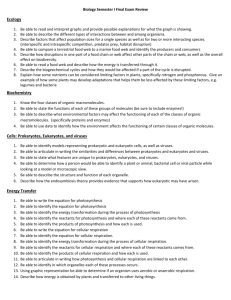I can explain how eukaryotic and prokaryotic are alike in some ways
advertisement
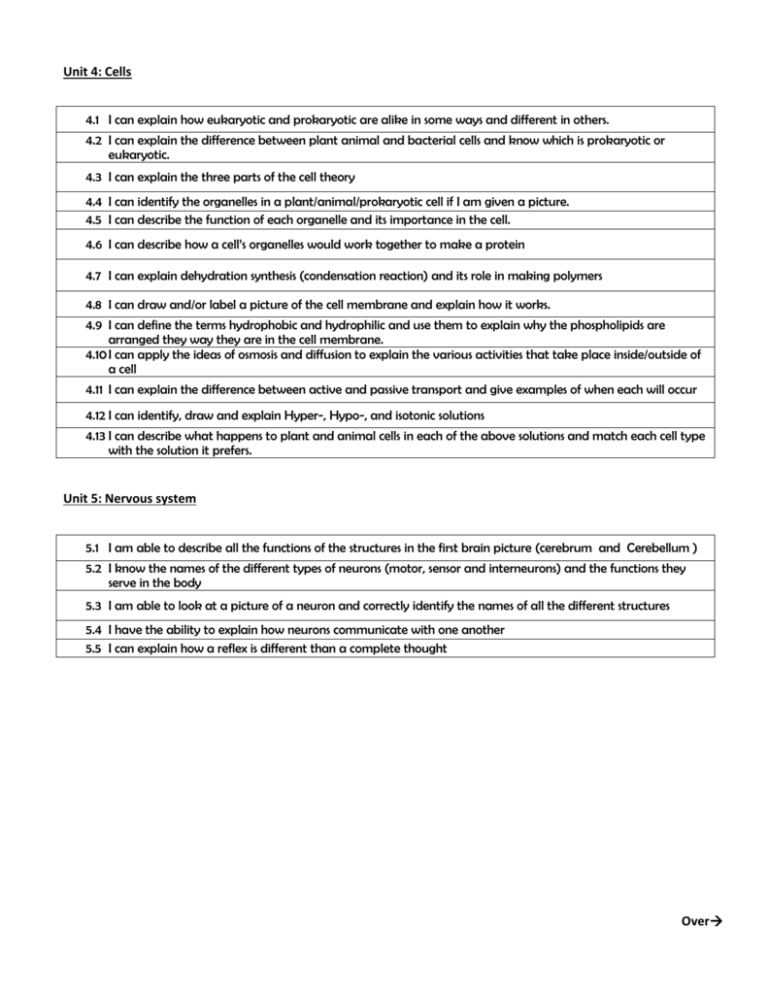
Unit 4: Cells 4.1 I can explain how eukaryotic and prokaryotic are alike in some ways and different in others. 4.2 I can explain the difference between plant animal and bacterial cells and know which is prokaryotic or eukaryotic. 4.3 I can explain the three parts of the cell theory 4.4 I can identify the organelles in a plant/animal/prokaryotic cell if I am given a picture. 4.5 I can describe the function of each organelle and its importance in the cell. 4.6 I can describe how a cell’s organelles would work together to make a protein 4.7 I can explain dehydration synthesis (condensation reaction) and its role in making polymers 4.8 I can draw and/or label a picture of the cell membrane and explain how it works. 4.9 I can define the terms hydrophobic and hydrophilic and use them to explain why the phospholipids are arranged they way they are in the cell membrane. 4.10 I can apply the ideas of osmosis and diffusion to explain the various activities that take place inside/outside of a cell 4.11 I can explain the difference between active and passive transport and give examples of when each will occur 4.12 I can identify, draw and explain Hyper-, Hypo-, and isotonic solutions 4.13 I can describe what happens to plant and animal cells in each of the above solutions and match each cell type with the solution it prefers. Unit 5: Nervous system 5.1 I am able to describe all the functions of the structures in the first brain picture (cerebrum and Cerebellum ) 5.2 I know the names of the different types of neurons (motor, sensor and interneurons) and the functions they serve in the body 5.3 I am able to look at a picture of a neuron and correctly identify the names of all the different structures 5.4 I have the ability to explain how neurons communicate with one another 5.5 I can explain how a reflex is different than a complete thought Over Unit 6: Cellular Respiration and Photosynthesis 6.1 I can identify what goes in (reactants) and what comes out of (products) cellular respiration. In other words, I know the equation for cellular respiration. 6.2 I can explain why plants and animals have to preform cellular respiration 6.3 I can list all of the steps of cellular respiration and explain what happens in each one. 6.4 I can explain where each step of cellular respiration takes place. 6.5 I can explain the importance of ATP as an energy molecule. 6.6 I can explain the relationship between ADP, ATP and Glucose and how their energies are used. 6.7 I can explain that energy from glucose is stored in a bond of ATP and if I am given a picture, I can identify the bond that the energy is stored in. 6.8 I can explain the differences between anaerobic and aerobic respiration (how much ATP is produced and under what conditions they occur) 6.9 I can identify the byproduct of anaerobic respiration that makes my muscles sore 6.10 I can explain the why red blood cells are important to aerobic respiration 6.11 I can identify what goes in (reactants) and what comes out of (products) photosynthesis. In other words, I know the equation for photosynthesis. 6.12 I can explain why plants have to preform photosynthesis 6.13 I can explain how plants obtain the materials they need to do photosynthesis. 6.14 I can explain the steps in photosynthesis and explain what happens in each one. 6.15 I can explain why plants are green

